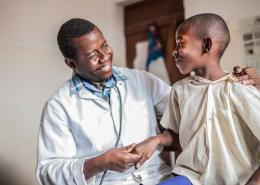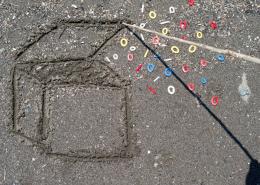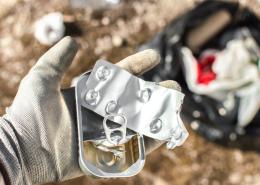May the Best Cell Win: How Scientists Choose One Champion Out of Millions
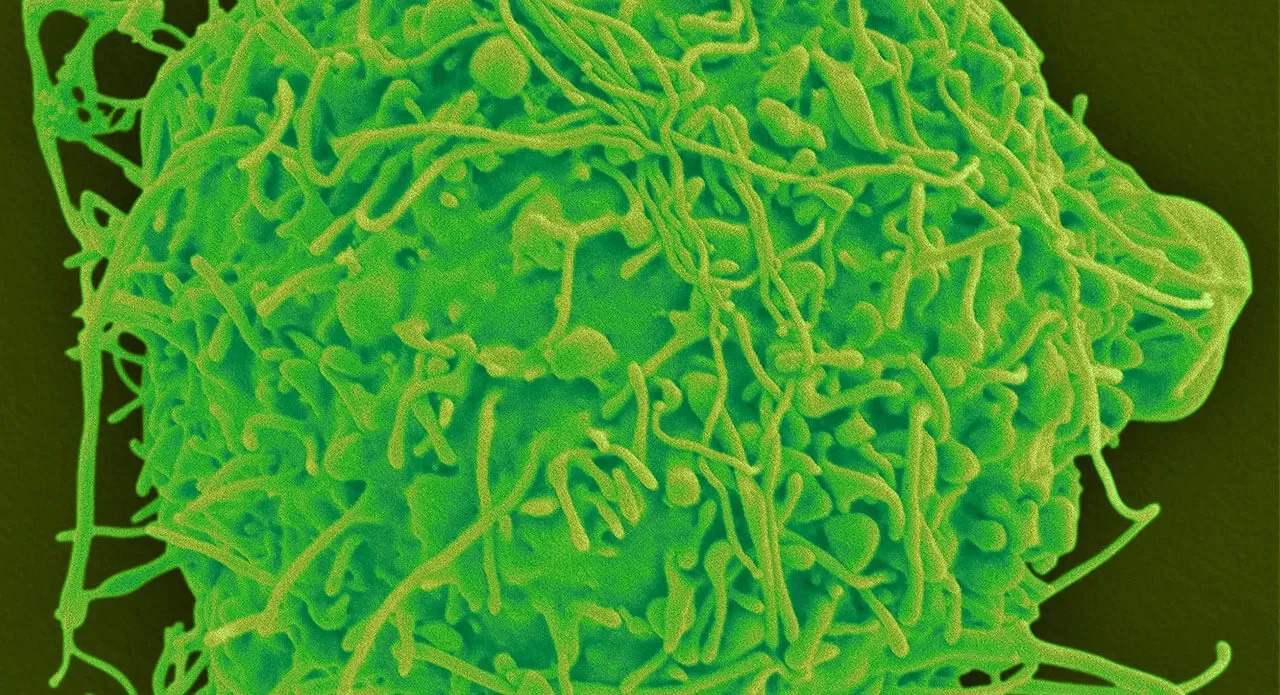
Making cells in the lab may not sound too dramatic, but under the microscope, what scientists call cell-line development can be even more competitive than the most cutthroat reality-show contests.
Adekunle Olatunbosun Onadipe, Associate Research Fellow in Pfizer’s Bioprocess Research and Development Group, leads the search for the best cell among the many cells that are made in his lab. The winning cell goes on to divide and grow into a large number of cells which will be used as tiny “factories” to make a protein that might be a useful therapeutic.

Adekunle Onadipe in the lab at Pfizer's Chesterfield, MO site.
Pre-Competition
It all starts with the host cells — cells that can take in or “host” DNA — that set the stage for the protein production “contest.” Much of the time, the host cells used are Chinese Hamster Ovary (CHO) cells. CHO cells are efficient at making proteins with the right structure, but they don’t normally make the protein that Onadipe wants his final cell line to make. That means he must modify them by “putting a genetic element into them that contains the instructions to make the protein of interest,” says Onadipe, who is based at Pfizer's Chesterfield, Missouri site.
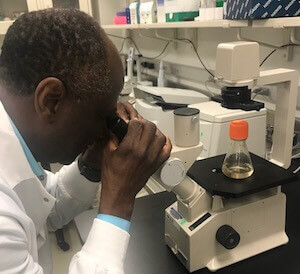
Onadipe peering through a microscope at CHO cells.
The genetic element is DNA, which instructs the cell to make a specific protein. DNA is made up of four molecules called nucleotides, written in short as A, T, C and G. Once Onadipe’s lab is told which protein to make, the scientists create the DNA by putting the A, T, C and Gs in a specific order in what’s called a plasmid vector. The sequence of the nucleotides in the vector is what tells the cells which protein to make. “If the DNA integrates into the genome of the host cell,” Onadipe says, “then every time that cell divides and grows, it will make our protein.”
How does he get the DNA into the host cell? Onadipe will typically “zap” around ten million host cells with an electrical pulse, leaving them riddled with tiny holes through which the DNA can enter. “It’s a random integration process,” Onadipe says, “because the DNA can go wherever it likes. It may get into the cell, or it may not get into the cell, and if it gets into the cell it may get into the nucleus, or it may not get into the nucleus, it may integrate into an active site or an inactive or poorly active site in the host genome.”

To get DNA into a host cell, Onadipe "zaps" the cell with an electrical pulse that leaves the cells with tiny hole that the DNA can enter through.
If it does get into the nucleus of a cell, there’s a chance it could make a lot of the protein. And if it does, that cell could win it all.
A Brutal First Round
“Cell line development is really a selection process,” says Onadipe. “If you’re lucky, you’ll get maybe one thousand out of ten million cells that have taken up your DNA. That’s less than one percent.”
The selective elimination process actually starts back when the DNA is constructed: A gene that codes for the enzyme called Glutamine Synthetase (GS) is added, along with the gene that codes for the protein of interest (i.e. the potential new medicine), to the DNA. GS gives the cells the ability to make the essential amino acid, glutamine from the consumption of another amino acid, glutamic acid. When cells are grown in the absence of glutamine, only those cells that have incorporated the GS DNA, and thus have also incorporated the specific protein DNA, will be able to make their own glutamine and survive, while all the other ones will be asked to go home, so to speak.
Nailing the Callbacks
In the next round, Onadipe looks for the highest producers of the protein among the remaining contestants. He starts with a “lightening round” to answer a binary question: “Can you sing or not? Or, in the case of the cells, can you make the protein or not?”
The cells that are the best protein producers are allowed to divide and grow into larger volumes, so their “line” can be tested more. These cells will get more of an opportunity to impress Onadipe, just as contestants who survive the first round of cuts on reality shows are allowed to sing a ballad AND a pop song for the judges. “You want to see their range,” Onadipe says of the cells. “Are they making the right thing, is the quality good, and is it going to bind to the target? Eventually, we narrow them down from six to twelve finalists to the top producer.” Ultimately, we are looking for sustained, continuous performance, a “seasoned rockstar” kind of a cell line that will continue to make our medicine for a long time, not a “one hit wonder!”
The Star Treatment
Once the one-in-10-million cell is selected to go on to make the protein that may become a new medicine, the rewards kick in: The champion cell line is given “everything they need to be comfortable, satisfied and happy,” Onadipe says. “We’re treating them like royalty. They are in a solution that is at their preferred temperature, has all the nutrients they need and is at the right pH level. We don’t want them to be stressed or hassled. We just want them to grow and make the protein that may become our new medicine.”



